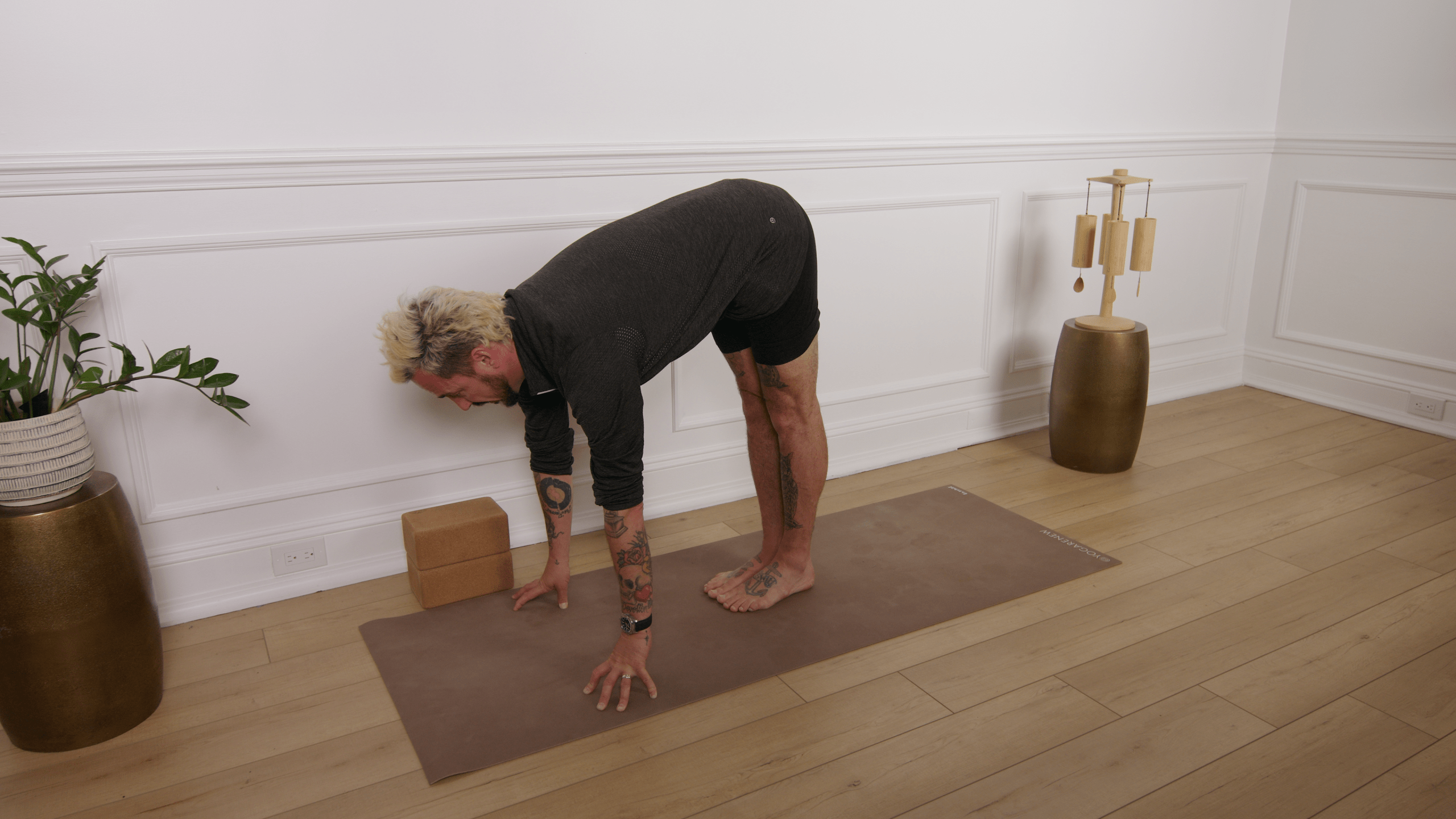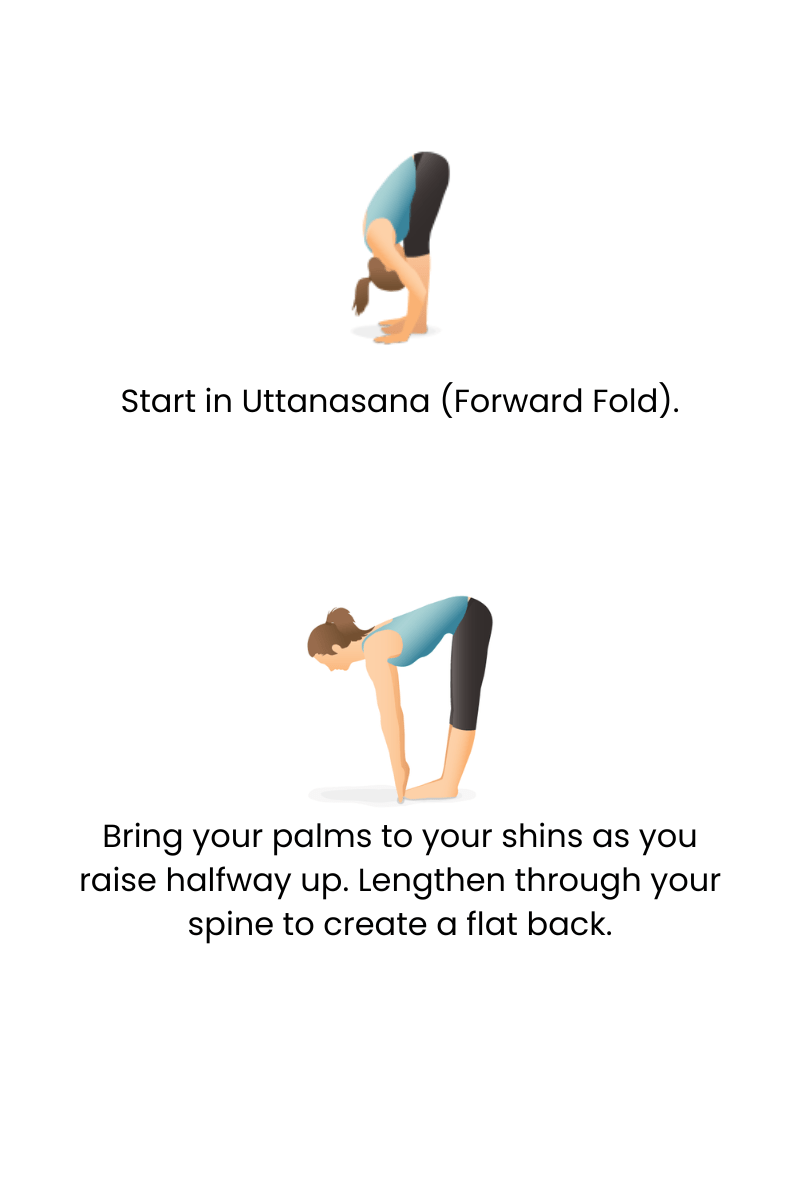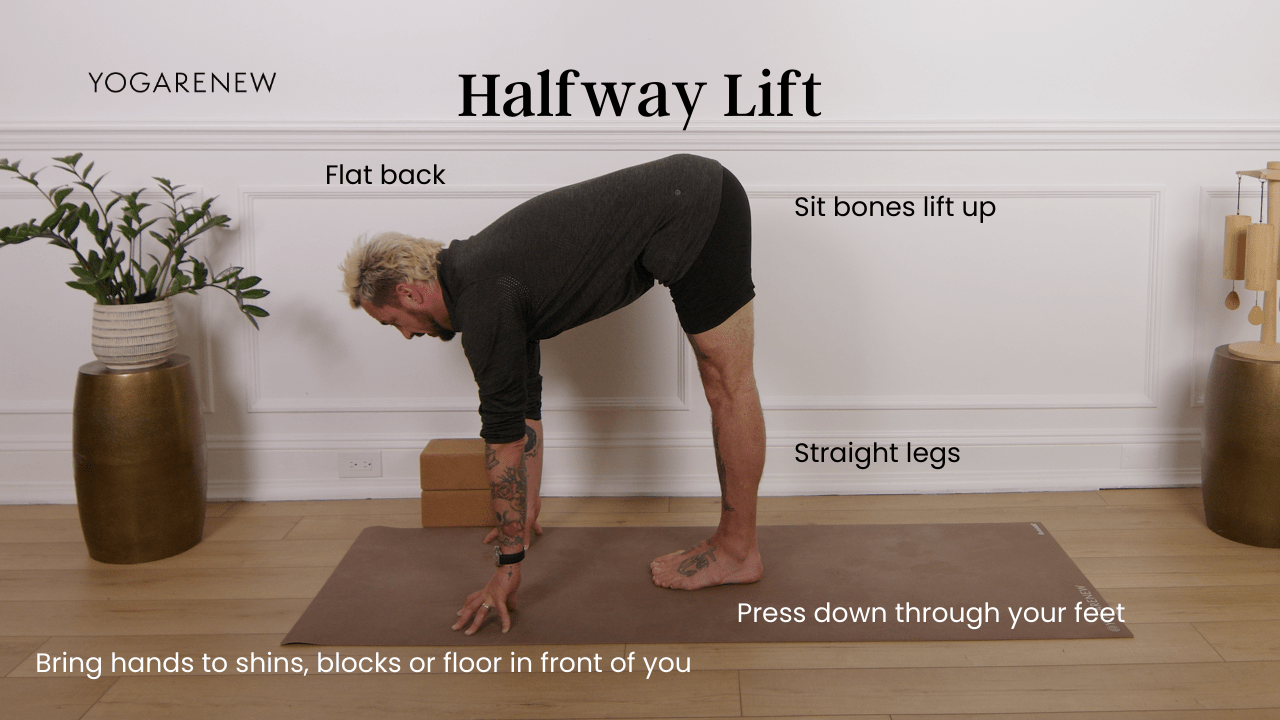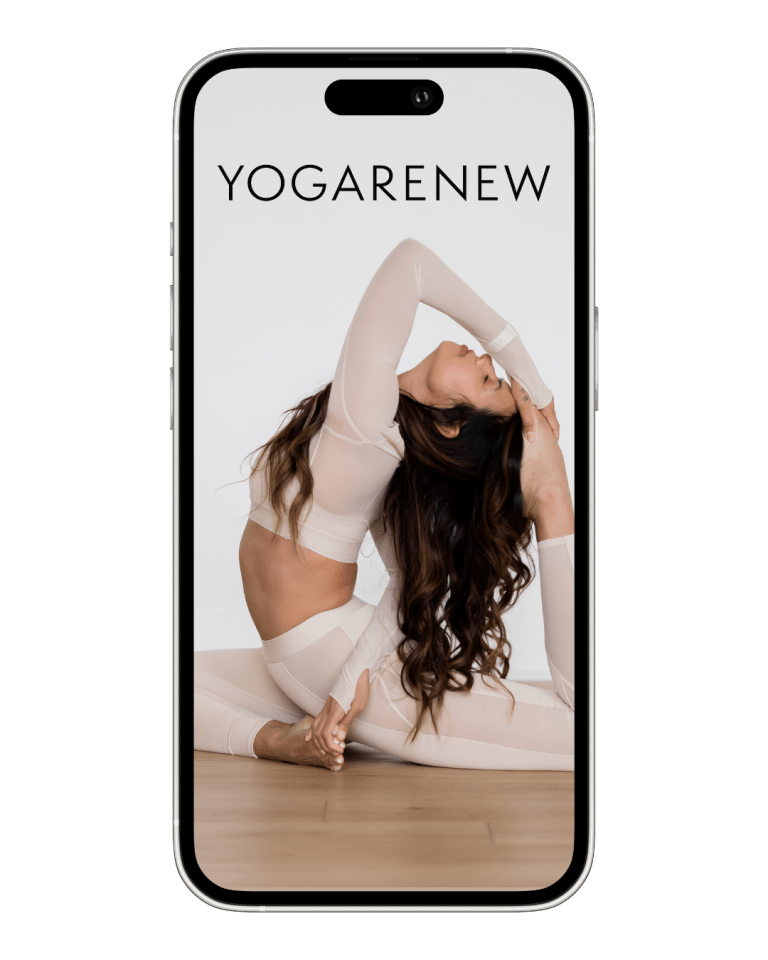What is Ardha Uttanasana?
English Name: Halfway Lift
Sanskrit Name: Ardha Uttanasana (pronounced ARE-dah oot-tahn-AHS-uh-nuh)
Category: Standing Pose, Transition, Foundational, Beginner-Friendly

English Name: Halfway Lift
Sanskrit Name: Ardha Uttanasana (pronounced ARE-dah oot-tahn-AHS-uh-nuh)
Category: Standing Pose, Transition, Foundational, Beginner-Friendly
Ardha Uttanasana, or Halfway Lift, is a fundamental transitional posture in many yoga sequences, especially in Sun Salutations. Though often brief, this pose teaches essential alignment, core engagement, and spinal extension—laying the foundation for more advanced forward folds and standing balances.
Practiced between Forward Fold (Uttanasana) and Plank or Chaturanga, Halfway Lift strengthens postural awareness, improves spinal length, and supports smooth movement. Despite its simplicity, it is powerful in cultivating presence, control, and alignment.


Though often brief, Halfway Lift is a vital component of safe, aligned movement in yoga. It teaches the foundational mechanics of spinal extension, strengthens the back and core, and helps prevent injury in deeper folds. Practicing Ardha Uttanasana with care transforms it from a simple transition into a key element of postural integrity and breath awareness.
Aim for a flat back—long spine, engaged core, and neutral pelvis.
No—it can also be held for strength building and alignment awareness.
Use blocks or place hands on thighs to keep proper spinal alignment.

Explore classes & pose tutorials for any style, format, duration or experience level with a free account in the YogaRenew app. Or subscribe and gain access to workshops, live classes and more.